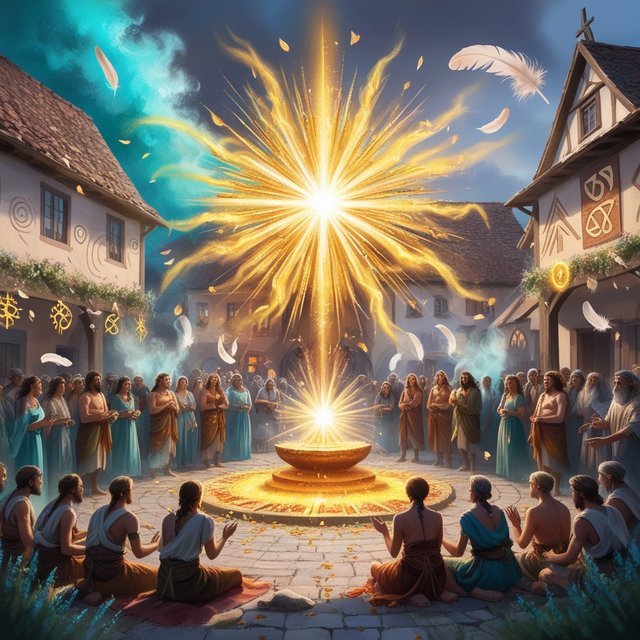
The summer solstice, often referred to as the longest day of the year, marks a pivotal point in the Earth's annual journey around the sun. This astronomical event occurs when one of the Earth's poles has its maximum tilt toward the sun, resulting in the longest period of daylight. For centuries, this day has been celebrated in various cultures around the world, with rituals and traditions that honor the power of the sun and the abundance of summer.
Understanding the Summer Solstice
The summer solstice typically occurs between June 20 and June 22 in the Northern Hemisphere. On this day, the sun reaches its highest point in the sky at noon, and daylight lasts the longest. Conversely, in the Southern Hemisphere, the summer solstice takes place between December 20 and December 23.
Astronomical Significance
The Earth's axial tilt of approximately 23.5 degrees is responsible for the changing seasons. During the summer solstice, the North Pole is tilted closest to the sun, resulting in the sun's rays hitting the Northern Hemisphere more directly. This causes the longest day and the shortest night of the year.
Cultural Significance
Throughout history, the summer solstice has been a time of celebration and reverence. Ancient civilizations built monuments and conducted rituals to honor the sun's life-giving power. Notable examples include:
Stonehenge: In England, the prehistoric monument of Stonehenge is aligned with the solstices. During the summer solstice, the sun rises behind the Heel Stone and its rays are channeled into the center of the circle, a spectacle that attracts thousands of visitors annually.
Midsummer: In Scandinavian countries, Midsummer is a major holiday. It involves dancing around the maypole, singing traditional songs, and enjoying feasts that celebrate the peak of the growing season.
Inti Raymi: The Inca festival of the sun, Inti Raymi, is celebrated in Peru. This ancient ceremony honors Inti, the sun god, and includes music, dancing, and sacrifices to ensure a good harvest.
Reviving an Ancient Solstice Ritual
In a quaint town nestled in the heart of Europe, the summer solstice is more than just a day of extended daylight. It is a time to revive an ancient ritual that has been passed down through generations. This town, with its cobblestone streets and old-world charm, is known for its deep connection to its cultural heritage and natural surroundings.
The Ritual’s Origins
The town's solstice ritual dates back to the pre-Christian era when the inhabitants worshipped the sun and nature. The ceremony was a way to honor the sun's power and ensure a bountiful harvest. Over time, as Christianity spread, many of these pagan traditions were lost or adapted. However, in this particular town, the essence of the solstice celebration endured.
The Ceremony
On the eve of the summer solstice, the townspeople gather in the main square, adorned with garlands of flowers and greenery. The air is filled with the scent of blooming flowers and the sound of traditional music. As the sun sets, the community lights a large bonfire, symbolizing the sun's energy and the triumph of light over darkness.
The highlight of the evening is the procession to a sacred hill overlooking the town. Led by the town's elders, dressed in ceremonial robes, the procession carries torches and sings ancient hymns. At the hilltop, they perform a series of rituals, including the casting of herbs into the fire, dances that mimic the sun's journey across the sky, and prayers for prosperity and health.
Discovering the Unexpected Power of the Solstice Ritual
As the townspeople engage in this age-old ritual, they discover its unexpected power. The ceremony is not just a nod to their ancestors but a profound experience that fosters a sense of unity and continuity.
A Deep Connection to Nature
Participating in the solstice ritual allows the townspeople to reconnect with nature. In today's fast-paced world, such moments of communion with the natural world are rare. The ritual reminds them of their dependence on the Earth's cycles and the importance of living in harmony with nature.
Strengthening Community Bonds
The solstice celebration brings the community together in a shared experience. It transcends generations, with elders passing down traditions to the young. This shared heritage fosters a strong sense of belonging and strengthens the social fabric of the town.
Personal Reflection and Renewal
The solstice is also a time for personal reflection and renewal. As the townspeople watch the sun rise on the longest day of the year, they are reminded of the cyclical nature of life. The ceremony provides a space for individuals to reflect on their personal journeys, set intentions for the future, and draw inspiration from the enduring power of the sun.
Conclusion
The summer solstice is a celebration of light, life, and community. It is a time to honor the sun’s energy, reconnect with nature, and come together as a community. The town's revival of an ancient solstice ritual is a testament to the enduring power of tradition and the profound impact of cultural heritage. As they celebrate the longest day of the year, the townspeople discover that the true power of the solstice lies not just in its extended daylight but in the timeless connections it fosters with nature, community, and the self.